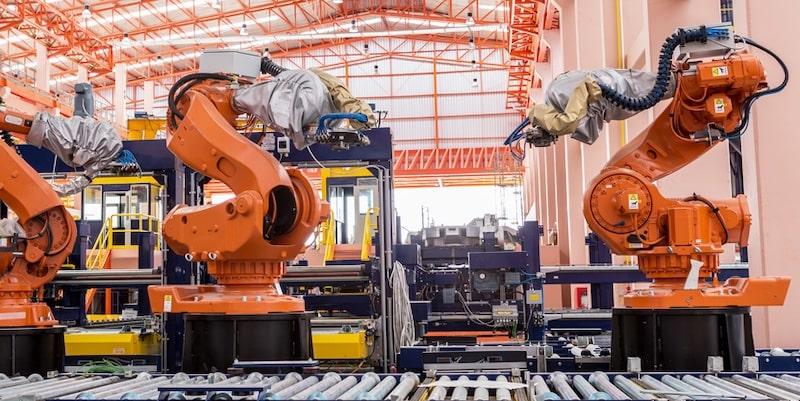We explain what technique and technology are and how they relate to each other. Also, examples of each of them.

What are technique and technology?
Technique and technology are two closely linked concepts, but they have different meanings.
- Technique. It is the set of procedures, methods and resources that someone has to perform an art or carry out something. This word comes from Greek technewhich is what Classical Greece called the skill and ability to perform a trade, such as weaving, cooking or even fighting with a spear and shield. For example, a good dancer has a good technique dance, just as an electrician has the knowledge technical which allows you to install a transformer. In both cases, the technique is a know-how (from the English “know how to do”), that is, a protocol necessary to perform a job.
- Technology. It is the set of knowledge and procedures applicable to solving real-life problems, through the scientific understanding of the techniques. This word comes from Greek roots: techne (“technique” or “art”) and logos (“know” or “discourse”). It is, however, a modern concept, emerged from the encounter precisely between technique and scientific knowledge (knowledge of the laws of reality). For example, once the properties of light propagation were discovered, humans were able to develop artifacts to modify it and thus create new technological tools, such as the microscope and the telescope.
For much of the history of humanity, technology and scientific knowledge traveled very separate paths: theories about nature and the daily work of artisans did not have as close a relationship as in modern times. Thanks to the development of scientific thought and its encounter with techniques, technology emerged, capable of irreversibly changing the tools, procedures and materials used.
Thus, it is important to understand that many techniques are also technologies and vice versa.
Differences between technique and technology
The differences between technique and technology can be summarized as follows:
| Technique | Technology |
|---|---|
| It refers to the skill or skill necessary to do something manually or mechanically. | It refers to the set of tools, equipment and systems used to facilitate the completion of tasks. |
| It is practical knowledge that is transmitted from generation to generation, either through study or practical training. | It is a set of scientific knowledge (theoretical and practical) applied to the dilemmas of everyday life, so that it is continually updated. |
| It can be used to produce objects and services more efficiently, but it does not necessarily involve the use of scientific knowledge. | It involves the use of scientifically designed tools to improve the efficiency and quality of products and services produced. |
| It focuses on completing tasks with limited resources and solving specific problems. | It seeks to improve and optimize processes, as well as develop new solutions for complex problems. |
| It can be more accessible and economical, since it does not require large investments in research and experimentation. On the other hand, it is not very innovative. | It is usually expensive and requires large investments for research, experimentation and testing of new tools. Innovation is one of its fundamental features. |
Examples of technique and technology

The following are some examples of techniques and technologies:
Examples of techniques
- Oil painting technique. It consists of mixing pigments and oils to produce a durable paint with different textures on a smooth surface.
- Crochet knitting technique. It consists of a manual weaving procedure that uses a special needle and thick thread to quickly and easily create fabrics with patterns and designs.
- Binding technique. It consists of joining sheets of paper and cardboard sheets to create resistant supports on which to write, such as notebooks.
- Setting technique in goldsmithing. It consists of a method of holding a precious stone in different noble metals, such as gold and silver, to create jewelry and decorative objects.
- Relief engraving technique. It consists of using a carved matrix to create a raised image on paper or fabric, and thus produce clothing, decorations and other types of printing.
- Pattern technique for cutting and sewing. It consists of creating a previous model (such as a template or mold) of the desired item of clothing. Once the pattern is obtained, it is covered with the fabric to produce clothing.
- Wood carving technique. It consists of the use of special tools to rough and modify wood, in order to produce furniture, effigies or tools.
- Case study technique. It consists of the presentation of typical cases (real or fictitious) to a group of students, so that they can acquire knowledge of the case through the identification of problems and possible solutions, applying creativity and inventiveness instead of repeat theoretical knowledge.
- photogravure technique. It consists of the use of a metal or glass plate, on which an image has been etched with acid, to serve as a model or template for subsequent prints on paper.
- repetition technique. It consists of the reiteration of a concept, a key word or a phrase throughout a speech or presentation, to ensure that it is more easily remembered by the audience.
Examples of technologies
- atomic energy. It consists of obtaining electrical energy through turbines powered by steam, with the exception that the energy necessary to heat the water and produce steam is obtained from a controlled nuclear fission reaction of uranium atoms. Requires knowledge of physics, chemistry and engineering.
- 3D printing. It consists of the production of three-dimensional objects from digital designs, through the use of a tool (a 3D printer) capable of depositing layers of melted solid materials, such as plastics or resins. It requires knowledge of computer science, engineering and fluid mechanics, among others, to produce objects quickly and specifically.
- robotics. It consists of the mechanization and automation of work previously carried out by a human being or impossible to be carried out by a human being, through complex systems of independent machinery, controlled by computer systems. It requires computer science and engineering knowledge to produce a robot capable of carrying out specific tasks.
- virtual reality. It consists of the creation of virtual (digital) environments in which a human user can interact with another or with a computer system as if it were a real-life interaction. It requires computer science and engineering knowledge to design tools (helmets, gloves, glasses) that allow the user to enter the virtual world and interact with it.
- nanotechnology. It consists of the design and creation of materials and devices at a nanometric scale, that is, smaller than what can be observed, in order to create new medical, construction and energy production techniques. Requires knowledge of computer science, engineering, chemistry and physics.
- genetic engineering. It consists of manipulating the genetic code of plant or animal species to obtain results favorable to humans, such as larger foods or crops that are more resistant to pests. This requires knowledge in biology, biochemistry, agriculture, livestock, among other similar fields.
- Vaccines. They consist of the introduction into the human body of an attenuated microorganism or some type of substitute that allows the immune system to develop defenses without suffering from the disease. Requires knowledge in medicine, biology and public health.
- Computerized Magnetic Resonance Imaging (MRI). It consists of the non-invasive study of the human body through magnetic fields that allow detailed images of its interior to be formed. This technology revolutionized the diagnostic techniques of medicine, and required computer, medical and engineering knowledge to develop.
- Vacuum packaging. It consists of the preservation of industrially produced foods, through the elimination of the air available inside the packaging (and with it the microorganisms that promote the decomposition of the food). Knowledge of chemistry and physics was required to design this industrially widespread technique.
- Biometrics. It consists of the identification and massive processing of physical traits and behaviors of human beings, using computer systems, to feed identity records and surveillance systems. This requires knowledge of computer science, anatomy and psychology, as well as engineering and other applied sciences.
Continue with: Technological field
References
- Carbonelli, J.P. (2020). “Technique or technology? Distinction of concepts to understand the relationship between people and obsidian towards the first millennium of the era. Museum of before. 14 (1). pp. 13-50.
- Online Spanish Etymological Dictionary. “Etymology of Technique”, “Etymology of Technology”. https://etimologias.dechile.net/
- Quintana, M and Aibar, E. (eds). (2013). Science, technology and society. Trotta.
- The Encyclopaedia Britannica. (sf). “Technology”. https://www.britannica.com/





